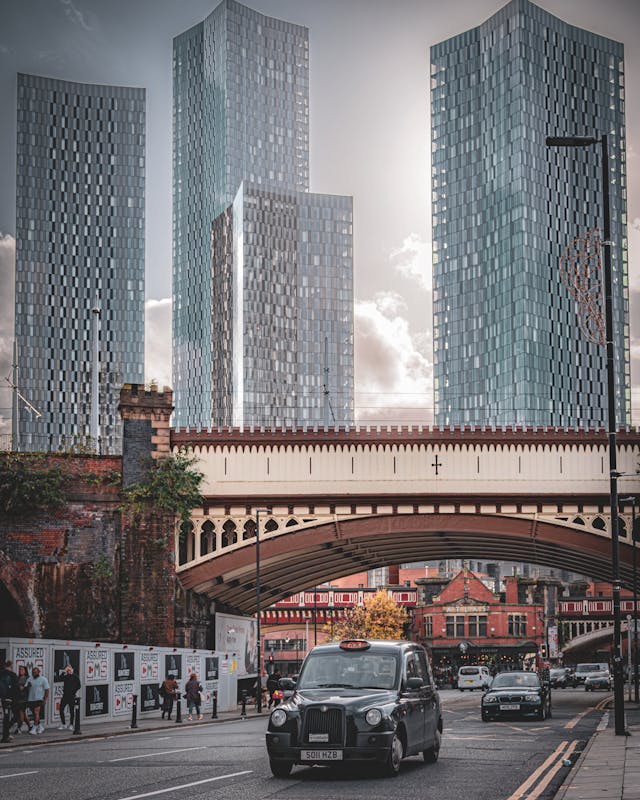Stop 4: Deansgate
Victorian Commerce to Glass Towers
Manchester’s longest thoroughfare charts the city’s architectural evolution from Victorian commerce to contemporary ambition. The street’s northern section showcases this transformation dramatically, bookended by the Neo-Gothic John Rylands Library (1900) and the modernist Beetham Tower (2006). The Great Northern Warehouse (1899) exemplifies the adaptation of industrial architecture, with its vast iron-framed structure now housing leisure facilities while maintaining its distinctive terracotta facade and railway features.
The Beetham Tower, Manchester’s first true skyscraper at 169 meters, represents the city’s 21st-century confidence. Its glass facade and distinctive overhanging section create a deliberate contrast with the street’s Victorian architecture. The building’s design by Ian Simpson pioneered the current wave of Manchester tall buildings, demonstrating how modern architecture can create new landmarks while respecting historic streetscapes.
Look for the surviving Victorian shop fronts with their ornate stonework, the restored cast-iron street furniture, and the varying building heights that tell the story of Manchester’s development. The Lincoln Square development shows how contemporary architecture continues to reshape the street while maintaining visual connections to its industrial heritage.
To Stop 5, Town Hall Complex: Continue north on Deansgate, turn right onto Peter Street, then left onto Mount Street.

